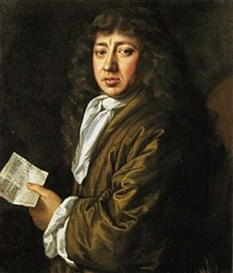
“This morning is brought me to the office the sad newes of “The London,” in which Sir J(ohn) Lawson’s men were all bringing her from Chatham to the Hope, and thence he was to go to sea in her; but a little a’this side the buoy of the Nower, she suddenly blew up. About 24 [men] and a woman that were in the round-house and coach saved; the rest, being above 300, drowned: the ship breaking all in pieces, with 80 pieces of brass ordnance. She lies sunk, with her round- house above water. Sir J(ohn) Lawson hath a great loss in this of so many good chosen men, and many relations among them. I went to the ‘Change, where the news taken very much to heart.” Diary of Samuel Pepys, March 1665″
This is an important conservation project which is also enhancing our understanding of the design and evolution of Naval guns from a period when the Commonwealth had just fought the First Anglo-Dutch War (1652-1654) and by the time of the Restoration aspired to become a supreme tool of War and guarantor of Commerce.
The project focuses on 3 guns, 2 from the wreck of the London a warship which was blown asunder by an explosion of powder cartridges and sank in 1656, and one composite Drake gun. It is estimated as a 5 year elapse project and is supported by funding from The Arms and Armour Heritage Trust, the Radcliffe Trust and the Leche Trust.
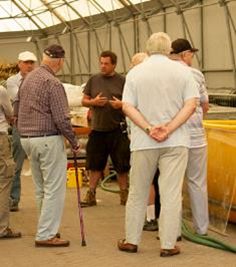
The project is trialling the latest processes for removing chloride ions from metallic relics recovered from sea water, This will be of critical importance to other tag heuer formula 1 42mm mens waz1112 ba0875 silver tone stainless steel conservation initiatives that pre-dated these techniques developed between the 1960s and 1980s. This will be enable evaluation of the impact on the long term stability of items treated with earlier techniques.
The guns recovered from the London are both very rare bronze cannon, one by gun founder Peter Gill, thought to be the only surviving example of his work and the other bearing the Commonwealth crest and thought to be one of a handful of surviving examples of a bronze gun of the Commonwealth. The Drake is helping to increase our understanding of the evolution and production methods of this genre of solution to producing lighter weapons whilst preserving hitting power.

Three guns once on HMS London which sank off Southend in the Thames Estuary during the Second Anglo-Dutch War (1665-1667).
Some on the guns on the HMS London were originally used on Dutch warships before being placed on HMS London, the cannons are believed to have been involved in The Restoration, transporting the son of Charles II, the future King James II, from his exile in the Netherlands.
The cannon were sold to a buyer in the US at an auction in 2010 having been found by a diver in around 2007.
Following a two-year investigation involving the Essex and Kent police, Historic England, the UK Maritime and Coastguard Agency, the diver was prosecuted for making a fraudulent claim of where he had found the cannons. He had insisted they had been found in international waters. However following the investigation it was proved they were from HMS London, which was at the bottom off the estuary just off Chatham in Kent.
They have since been repatriated to the UK. (Antique traders Gazette, Laura Chesters 15 Dec 2017).
The Warship London is now designated as a historic wreck under the Protection of Wrecks Act 1973

Photographs of the Composite Drake gun 
HMS London
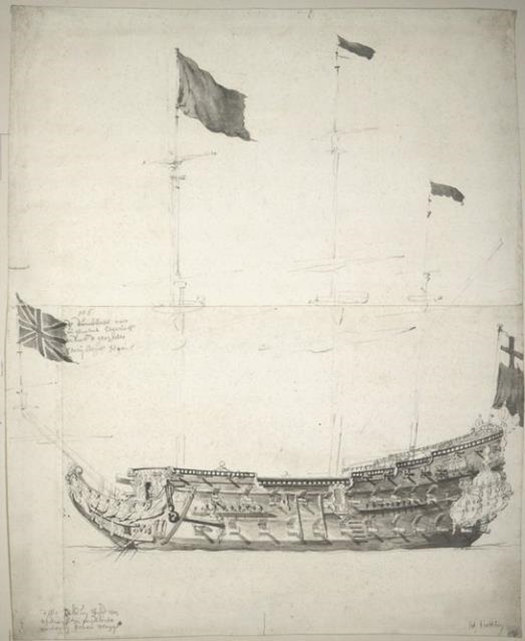
The ‘London’, as depicted by van de Velde in 1656. © National Maritime Museum
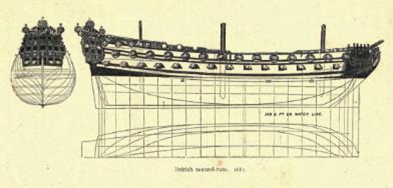
HMS London was a 64 Gun second-rate Ship of the Line deigned by John Taylor a built in Chatham in 1656: see https://threedecks.org
1660 Broadside Weight = 534 Imperial Pound ( 242.169 kg)
Lower Gun Deck 12 British Demi-Cannon (32 Lb)
Lower Gun Deck 12 British Culverin (17 Lb 5 ½ Oz)
Middle Gun Deck 12 British Culverin
Middle Gun Deck 12 British Demi-Culverin (8Lb – 9Lb)
Upper Gun Deck 16 British Demi-Culverin
Crew Complement
Date # of Men
1660 360
1660 450 Establishment for war abroad
1660 360 Establishment for war at home
1660 280 Establishment for peace
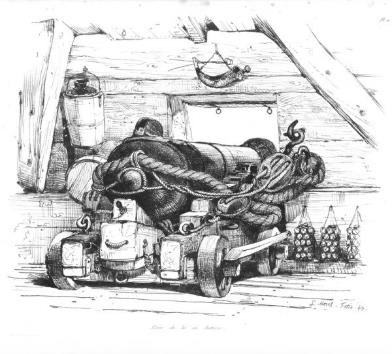
Drawing by Antoine Morel-Fatio, Public Domain, Wikipedia
Arming of a Naval Officer
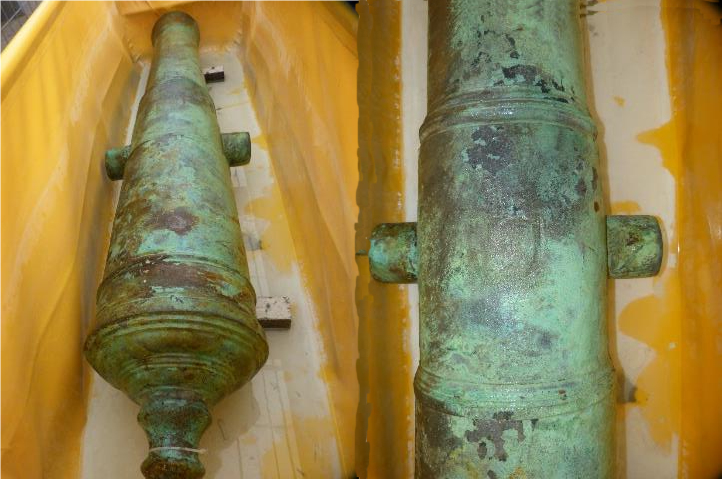

“Flagmen of Lowestoft”: Admiral of the Red Sir John Lawson, Posthumous portrait by Peter Lely. Portrait: National Maritime Museum, Greenwich, London, Greenwich Hospital Collection
Lawson was formerly Captain of the London when in the Parliamentary Navy. In 1660 he again commanded the London as 2nd in command of the expedition to repatriate Charles II from the Netherlands Ϯ. On 3 June 1665 he was wounded in the knee at the Battle of Lowestoft, when engaging the Dutch Fleet. The wound became gangrenous, killing him 2 weeks later. He was buried at the Church of St Dunstan-in-the-East, London at night, only navy officers accompanying the coffin. By this date, in response to the growth in plague fatalities burial at night was mandated, so again compliance with this despite not being a plague death may have been expedient.
Ϯ (See “1666 Plague, War and Hellfire”, Rebecca Rideal, John Murray Publishers, London 2017).
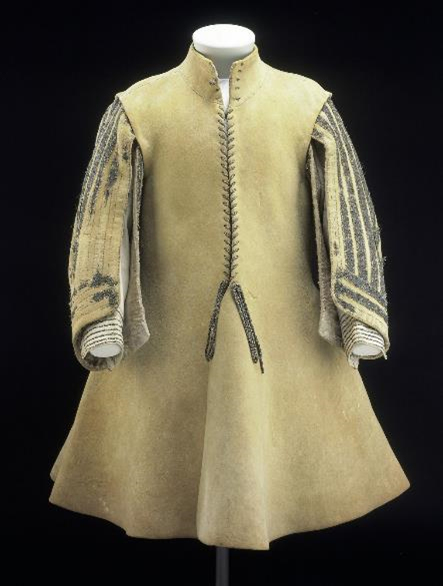
An English buff coat c. 1640-1650. Typically made of oil-tanned cow-hide. The lower skirt where it protects the thighs are up to 5cm thick.
(See http://collections.vam.ac.uk/item/O78845/coat-unknown/)
Photo V&A T.34-1948
Admiral Sir John Lawson is portrayed wearing a buff coat over a sleeved jacket. Over this is a high quality but relatively plain blackened breast and back-plate. The rivets securing the liner, plated straps and hasps securing these are gilded.
Suspended from his sword belt is what is probably a ceremonial hanger distinguished by a robust lions head pommel. All elements of the hilt are also gilded. A similar style of hilt appears in other Lely portraits in the Flagmen of Lowestoft series. This might indicate a common naval pattern but could just as likely reflect Lely’s artistic preference or perhaps props.
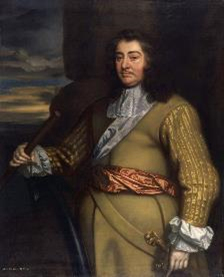
dd
Commonwealth Guns
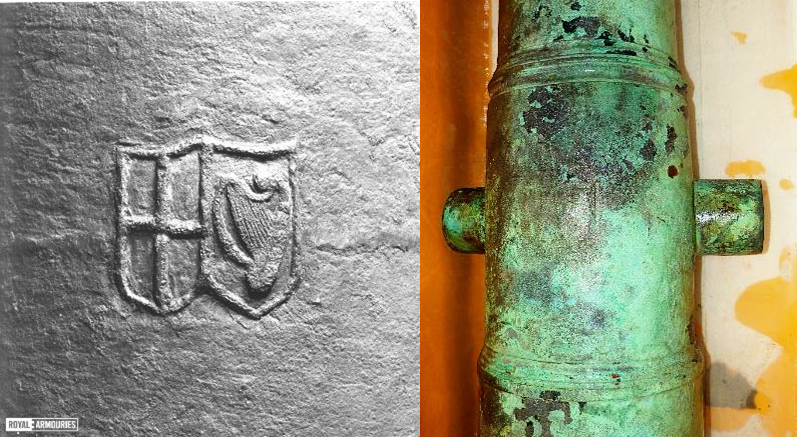
Prior to recovery of the Gun from the London only one cannon still marked with the Arms of the Commonwealth existed. This was the Royal Armouries Leeds – 4.5” demi-culverin – The Commonwealth gun (1649-1653). This cast iron cannon was found in an area which was most probably the site of the Battle of Schveningen fought between the English and the Dutch fleets on 31 July 1653. It seems likely it had been shipped from the Tower to Tilbury for outfitting the Oak, one of two English ships lost that day.
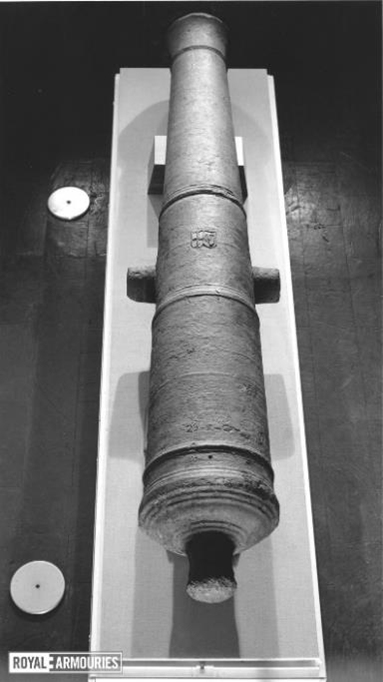
When compared to the example at Fort Nelson we can see that the escutcheons are of a simpler design, without the cusped upper edges (also seen on commonwealth coinage). However, there are stylistic features common to both guns (such as a very narrow vent field – the section within which the vent hole is found; annular groove to the rear of the 2nd reinforce moulding, above the commonwealth arms etc.) which are found on cannon manufactured. (Nautical Archaeology, 17.1; the Commonwealth Gun, G.M. Wilson).
The bronze London gun appears to bear a more sophisticated representation of the Arms of the Commonwealth. After the Restoration of Charles II Commonwealth Arms would have been effaced hence the extreme rarity of extant pieces.
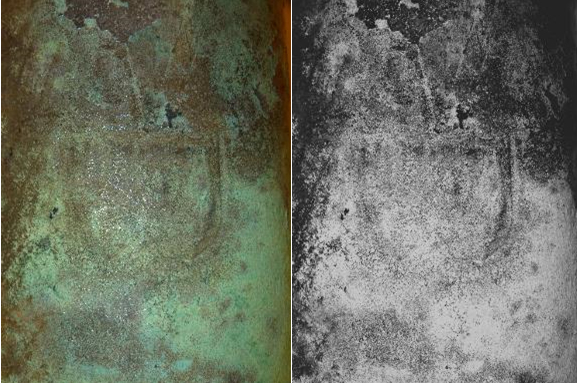
Photographs courtesy of the Royal Armouries, Fort Nelson 2018

The Council of State on 22 February 1649 stated: “that the ships at sea in service of the State shall onely beare the red Crosse in a white flag”. The order was signed by Oliver Cromwell on 23 February. On 5 March 1649 the Council ordered “that the Flagg that is to be borne by the Admiral, Vice-Admiral, and Rere-Admiral be that now presented, viz., the Armes of England [Red St. George Cross on white] and Ireland [gold harp on blue] in two severall Escotcheons in a Red Flagg, within a compartment.“ (see www.crwflags.com)
Thus by March 1649 the coat of arms of the Protectorate became two escutcheons, one bearing the Cross of St George, the other the Harp of Ireland.
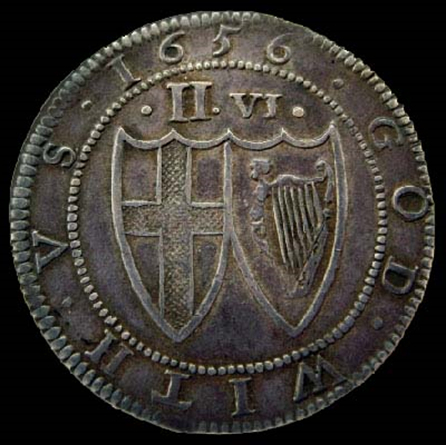
The London which was launched in 1656. Her cannon would most likely pre-date that year but based upon the commonwealth arms would not pre-date 1649. Whilst Scotland was reunited with England by an Ordinance of 12 April 1654, coinage of 1656 still bears the twin escutcheons charged with the English Cross of St George and the Harp of Ireland. It is possible to discern the Harp within the right escutcheon on this cannon.
The Peter Gill Bronze Cannon


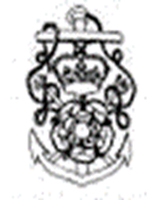
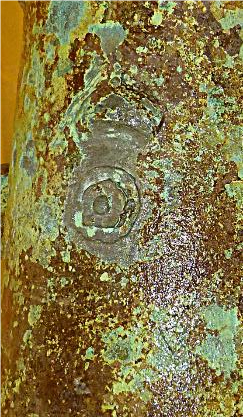
Left: The Crowned Tudor rose remaining on the upper part of the barrel. Compare this with a full Charles I cypher with a chained anchor enclosing a Tudor rose. This latter appears on R. Roth’s dawings of a Bronze demi-culverin drake from the Sovereign of the Seas which is inscribed “JOHN BROWNE MADE THIS PEECE ANO 1638”. Jean Boudriot publications/ Sovereign of the Seas: The Seventeenth-Century Warship By James Sephton, Amberley Publishing 2013).
The Dutch Composite Drake gun – an attempt at producing lighter but effective naval cannon
The composite Drake was designed to deliver a lighter cannon without reducing the weight of shot or force of charge that could be accommodated. The extant pieces were produced in Amsterdam and English Ordnance records confirm purchase by the English Navy occurred. As can be seen, however, the composition has inherent potential weakness and would be prone to error in manufacture. An aspirant innovation which failed to capture volume uptake.


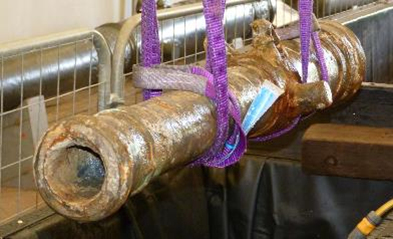
Built up of copper alloy and iron, probably soldered using lead alloy.
The copper alloy covering is ornamented with bands of interlace at the main mouldings and cascabel, including button. It is provided with dolphins. According to the inscription behind the vent, it weighs 260 Amsterdam pounds.
Calibre 60-70 mm
